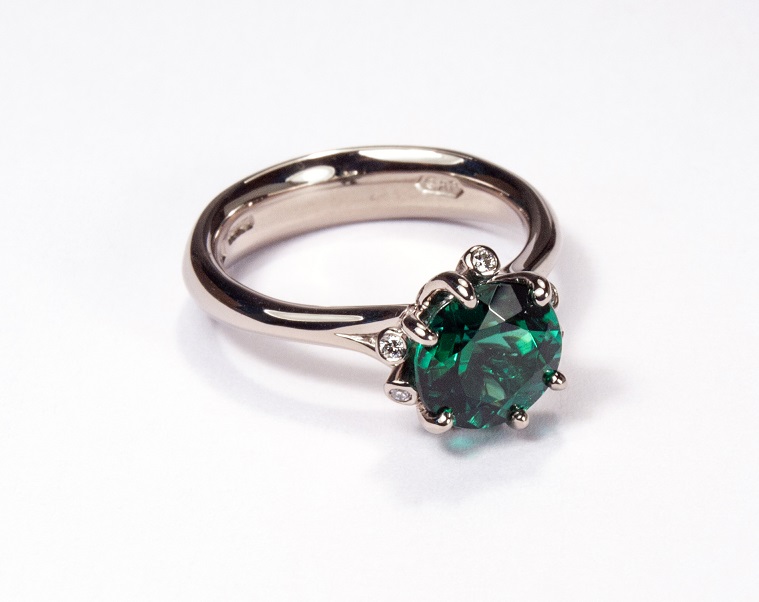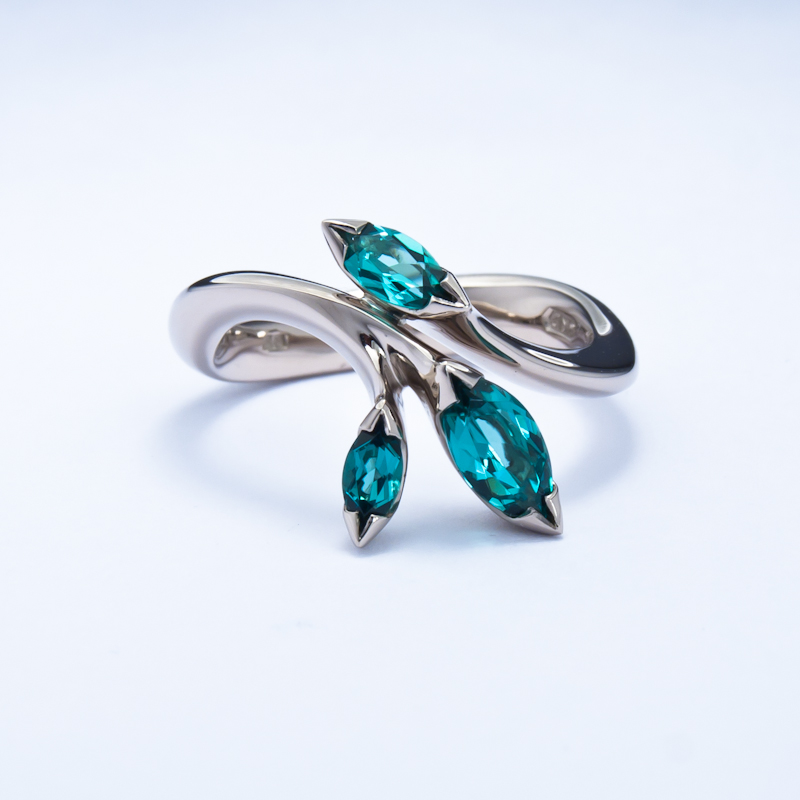Tourmaline for October
01 October 2016
Technically October has two birthstones Opal and Tourmaline but we’ll be mainly focusing on the Tourmaline. Tourmalines are classed as semi-precious and measure 7 ½ on the mohs hardness scale (so not ideal for everyday wear). Tourmalines come in a myriad of different colours and can also be bi-coloured like Watermelon tourmaline (green and pink).
%20-%20used.jpg)
Tourmaline’s colours have many different causes. It’s generally agreed that traces of iron, and possibly titanium, induce green and blue colours. Manganese produces reds and pinks, and possibly yellows. Some pink and yellow tourmalines might owe their hues to colour centres caused by radiation, which can be natural or laboratory-induced.

In 1554 the first recorded green tourmaline crystal was found but right up to the 1800s it was mistaken as emerald, .
Tourmaline is the gem of the eighth anniversary (it comes in so many colours that everyone’s favourite is covered- so a safe bet then!).

A quick side note on Opals; opals are made of hardened silica gel, usually containing 5-10 percent water. The flashes of colour (or iridescence) is caused by the stone structure (a regular arrangement of tiny silica spheres, diffracts light). They are very soft and can crack or dry out. Jon has some lovely boulder opals, which occur when the hardened silica gel, forms in the cracks and fissures of a host rock - usually Iron stone. The result can be an amazing matrix of colour.
If anyone would like a closer look at either gem, just let us know!
Bye for now!
Hannah
There are currently no comments
Leave a comment
Your email address will not be published. Required fields are marked *